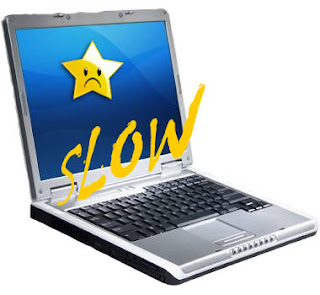 My Notes -
My Notes -My laptop had started becoming slower and it was
beginning to frustrate me. So, i decided to go online
and find the way out.
Eventually i was able to get 35 things that i could try out
some of them have improved my LT's speed already :)
my Notes end here-
No matter how you look at it, a PC never feels fast
enough, and when it comes to Vista, everything seems
to take too long.
Copying files, searching for documents, connecting to
a wireless network and waiting for it to start are all
frustrating.
The good news is that we've got a stonking selection of
speed tips, tricks and tweaks for you.
Whether you're using a desktop or a laptop, here are some
handy tweaks you can make, services you can turn off and
much more to help you get things done faster.
1. Clean out old files
In Performance Information... click Open Disk Cleanup to
delete redundant files. Then click Start, enter 'defrag' in the
search box and press Enter, click Defragment Now, and wait
while your hard drive is optimised.
2. Tame the Sidebar
The Sidebar is fun, but the more gadgets you add, the more
system resources they'll consume and the slower your PC will
be. Remove gadgets you don't need, or right-click on the Sidebar,
select Properties and clear Start Sidebar to disable it altogether.
3. Disable unused devices
Click Control Panel > System and Maintenance > System
> Device Manager, right-click hardware you don't need
- an unused network adapter? - and select Disable. However,
disable the wrong thing and your PC won't reboot, so if in doubt,
leave it.
4. Disable unwanted services
Type 'Services' in the Search box and press Enter
to see what's marked as 'Started' and running on
your PC. Services you may not need that start
anyway include the Distributed Link Tracking Client
(which maintains NTFS file links over a network)
and the Tablet PC Input Service (unless you're using
a Tablet PC). Double-click a redundant service, set
its Startup type to Disabled, and it won't be relaunched
when you next boot. Again, some services are vital to
your system, and disabling them will stop it from
booting altogether. Take advice from sites like Black
Viper, and if you're in doubt about something, leave it
running.
5. Troubleshoot long boot times
If your PC is up to date, but you're suffering really slow
boot times (over three minutes) then there could be a
hardware or driver issue. Try removing everything apart
from your monitor, keyboard and mouse. Or if you're
currently unplugged from your network, reconnect and
see what happens.
6. Check for errors in the Event Viewer
Find clues in the Event Viewer (type 'eventvwr' in the
Search box and press Enter). Expand the Windows Logs
part of the tree and browse the Applications and System
logs. Scroll down to the last time you booted and look for
error messages that might explain why your PC is
performing poorly.
7. Remove system tray clutter
Take a look at all those icons in your system tray. For
every essential item like your antivirus program, there
will be something else, like QuickTime, which probably
doesn't need to be there at all. Right-click or double-click
that icon, look for ways you can tell the program not to
load, and benefit from a little extra speed.
8. Check running tasks
Some background programs will run anyway, and could be
tying up more memory or processor time than you realise.
To find out, right-click the taskbar, select Task Manager >
Processes. Now just watch for a while. Assuming you've
sorted by CPU use, you'll now see background processes
pop up as they run. If you spot something you don't recognise
that's taking up 10 per cent or more CPU time, right-click it
and select Properties to find out more. Once you've discovered
which program owns this process, check the documentation to
find out if you really need to run it.
9. Get rid of unwanted startup programs
Launch Windows Defender and click Tools > Software
Explorer to see the programs that load when Windows
starts. Don't automatically delete them all, but if you're
positive a program is unnecessary, click it and select
Disable to stop it loading.
10. Trim the fat with Autoruns
Every program that starts up with your PC extends the
boot time. Some programs are essential, but others aren't.
Trim them back with free program Autoruns. Autoruns has
a whole series of tabs - each of these display start-up
programs according to their category. Switch to the Logon
tab. Before you remove anything, right-click on it and
choose Search Online to find out more. Once you've been
able to verify that a disabled entry isn't important, you
can opt to remove it completely - to do so, right-click and
choose Delete. Click Yes when prompted. This action should
prevent future memory loss.
Coutresy TechRadar.com
QUOTE OF THE POST
"Run Baby Run" -unknown


3 comments:
It's great. I'm going to add you right now. Let me know when you do the same. Jason
Check out this general tip: Keep operating temperature down - Your laptop operates more efficiently when it’s cooler. Clean out your air vents with a cloth or keyboard cleaner.wish to read more? check HERE
Thanks. Guys for commenting.
Post a Comment